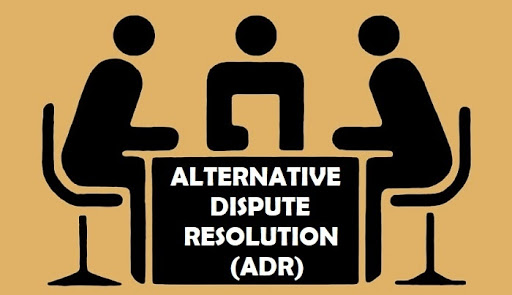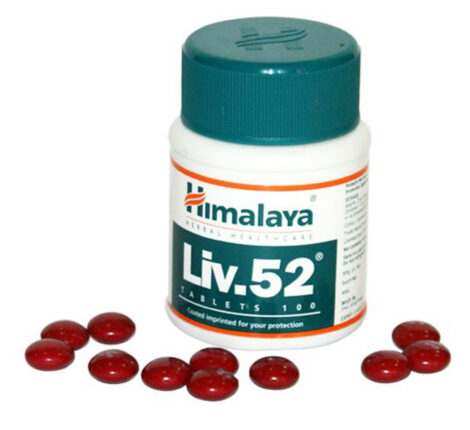The Need Of Alternative Dispute Resolution (Adr) In IP Disputes
Introduction
Development in global exchanges has duplicated the potential for cross-line Intellectual Property (IP) debates. Worldwide difficulties for example, the computerized climate, environmental change issues, admittance to medical services, the security of customary information and conventional social articulations and the safeguarding of biodiversity – may make new sorts of IP debates. In the interim, the financial slump is giving a motivating force to partners to look for more productive and reasonable methods for settling such questions than through court case – making alternative dispute resolution (ADR) an undeniably appealing alternative.
ADR alludes to impartial instruments permitting the parties to settle their issues outside of court in a private discussion, with the help of a certified unbiased delegate of their decision. ADR must be applied if all parties consent to present their issues to the technique or in the event that it is ordered by a competent court. The advantages include incorporate time and cost productivity, adaptability, party control, impartiality, a solitary technique, secrecy and ability.
Issues identifying with IPRs are continuously raising in the Indian legal scenario. IPRs are held by the proprietor who needs the IP to be protected. Due to the unreasonable deferrals in the legal framework, there is a need to search for different arrangements and instruments for sharing the weight of the execution of the same . This is especially important on the grounds that the oppressed individual appreciates restricted rights and the only remedy accessible is what is recommended under the enactments. Alternative dispute resolution (ADR) measures are known to uphold the protection of registered IP.
Alternative Dispute Resolution in Indian Scenario
The technique for settling questions through Alternative Dispute Resolution (ADR), has been long established in the Indian Culture and occurrences of the same can be followed back to the times of Ramayana and Mahabharata.
In Mahabharata, Lord Krishna went about as middle person to turn away Mahabharata war and in Ramayana, Lord Hanuman and Angad went about as arbiter to determine the contest with Ravana. Nonetheless, the intercession in these episodes fizzled and it tends to be assembled that it is amazingly vital for the gatherings to have a receptive outlook and ability to discover an answer and settle the debate genially, to guarantee adequacy of the ADR instrument. Considering, the long utilization and the capability of ADR, it is recommended that parties before going towards any Court of law be open to resolve their disputes through various ADR methods.
The scholarly endeavors of the makers of IP are esteemed based on the indication of the rights attached to intellectual output. IP security gives a pointer to the maker to apply his controls over outsiders, who, without his authorization, attempt to utilize his rewards. .
The reasoning for the formation of rights gets crushed on the off chance that they can’t be implemented. The proprietors of IP must be their own guard dogs and take matters to the Courts for the infringement of their rights.
Indian Courts have taken several strides to protect IP in India, however, the assets could be put to better use in India if the ADR is implemented.
Matters identified with patent law and copyright law, which include convergence with science and a comprehension of innovation, need unique dispute settlement experts who can examine and evaluate the interdisciplinary disputes. The restricted rights given to the proprietor of a protected IP calls for creating systems to execute quick decisions and quick remedies.
IP is a perplexing field of common law. Recently, the level of intricacy associated with IP cases have enhanced and now are attributable to the internet, headway of innovation and rise of new topics of protection in IP law. Yet, the conventional settling framework used to address forthcoming issues in IP law remain.
When any IP issue emerges, the concerned parties and their lawyers indiscriminately turn towards the customary way of case, neglecting to consider the gigantic capability of ADR strategies which give more successful and productive remedies .
Likewise, it is relevant to note that in IP disputes, parties have high stakes engaged with the ultimate result and thus, the parties that allude the debate to the case will in general create concerns not just in regards to the high costs of settling disputes but also the vulnerable position they are being put in.
In contrast to a suit in the courts, ADR urges parties to arrive at an amicable settlement. Besides, as opposed to suit, which could be uneven, the arrangements acquired through ADR procedures favor both the gatherings. It is imperative to take note of that ADR is dynamic in nature, and subsequently, can be modified likewise, to meet the changing requirements of the general public. It gives the concerned parties, an opportunity to tailor-make the cycle and rules of the preliminary hearings and have power over the procedures. This empowers the gatherings to protect their financial assets, significant time, and picture of the association just as the connection between the parties.
In light of the case of ShreeVardhman Rice and Gen Mills v. Amar Singh Chawalwala, the Hon’ble Supreme Court of India held that: “without going into the merits of the contention, we are of the assessment that the issue identifying with patents, copyright and trademark ought to be decided speedily by the Trial Court rather than just giving or declining to give injunction. In the issue of brand names, copyrights and licenses, prosecution is predominantly battled between the parties about the impermanent directive and that continues for quite a long time and the outcome is that the suit is not really chosen at last. This isn’t appropriate. In our assessment, in issue identifying with brand names, copyright and licenses, the stipulation to Order XVII Rule 1(2) C.P.C. ought to be carefully consented to by all the Courts, and the knowing about the suit in such matters ought to continue on an everyday premise and the last judgment ought to be given typically inside four months from the date of the documenting of the suit.”
Also, in the case of Bajaj Auto Ltd. v. TVS Motor Company Ltd, the Hon’ble Supreme Court of India held that “experience has indicated that in our nation, suits identifying with the issue of licenses, brand names and copyrights are forthcoming for a long time and case is primarily battled between the parties over injunction. This is an exceptionally inadmissible situation, and consequently, we had passed the above cited request in the previously mentioned case to serve the finishes of equity. We direct that the headings in the aforementioned request be completed by all courts and councils in this nation reliably and loyally. It is clear that because of ridiculous postponement in the removal of cases and the expensive suit which could delay the security agreed to the work, as opposed to advancing the advancement of intellectually ensured work, the oppressed gatherings are settling on ADR instruments for the progression of licensed innovation rights in India.”
Benefits of ADR
Alternative dispute resolution instruments are less tedious, formal and give adaptability to the IP holder. It is critical to take note that in all the business exchanges, ADR has played a dominant role over the conventional methods of prosecution. These days, contracts identified with move of protected innovation generally incorporate the arbitration and mediation provision.
- Secrecy
Confidentiality assumes a significant part and is of vital worry in IP cases including patents, trade secrets and software programming, where the parties plan to keep such delicate data private and safeguarded . Probably the greatest preferred position of ADR is that not normal for suit, its interaction is limited by the terms of the agreement. . The procedures are private and no record or any data is permitted to be opened by the general population.
- Time saving
ADR measures saves a great deal of time of both the Courts and the parties. In the present situation courts are overburdened with the cases and because of which, cases will in general face delays in arriving at a resolution.
- Cost-efficient
Intellectual property issues require excessive measure of cash to be spent on suit, whereas in ADR, because of its in-assembled abilities, the questions can be settled in a limited time period and is flexible in a lesser sum..
Keeping in view the advantages of ADR, the Indian Judiciary encourages parties to determine their disputes through the ADR methods and the endeavors with respect to the same are even apparent in the Section 16 of the “Court Fees Act, 1870”
- End result
In ADR the gatherings have the power over the ultimate result of the process, as the settlement is drawn with the assent of both the parties ADR gives the parties a platform to think of innovative arrangements or options which would end up being advantageous for their businesses.
Conclusion
ADR is a better dispute solving mechanism for IP. Intellectual Property rights has a limited life span and by the time the litigation comes to end, the protection given to them is bound to lose its significance. The IP infringement, being activities in-personam (as it decides the rights between two parties) should be definitely settled by the utilization of ADR. Indian courts have again and again stated that the alternative dispute resolution mechanism is the need of hour.




